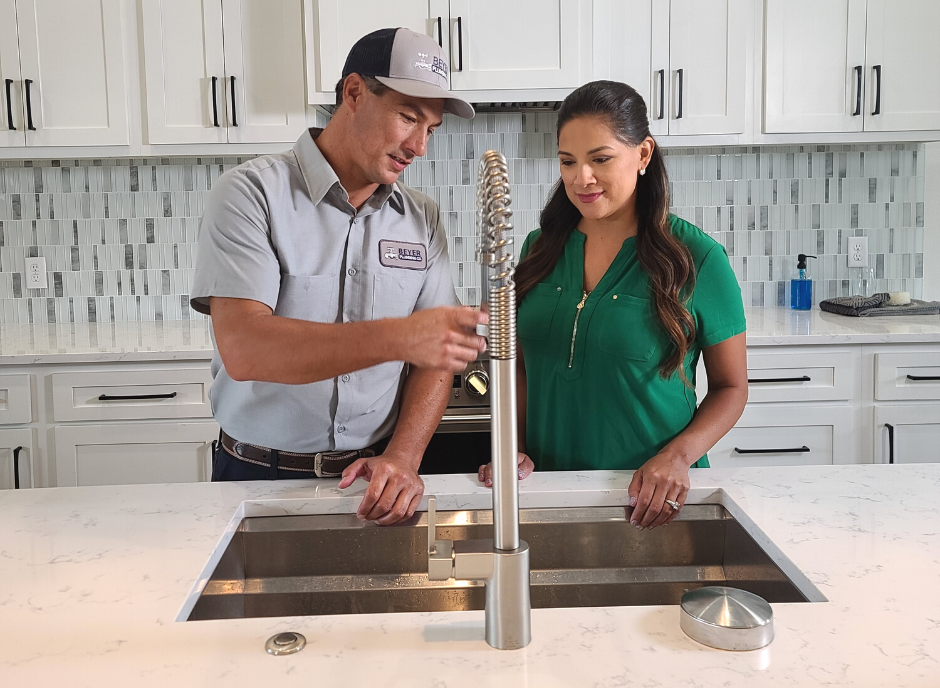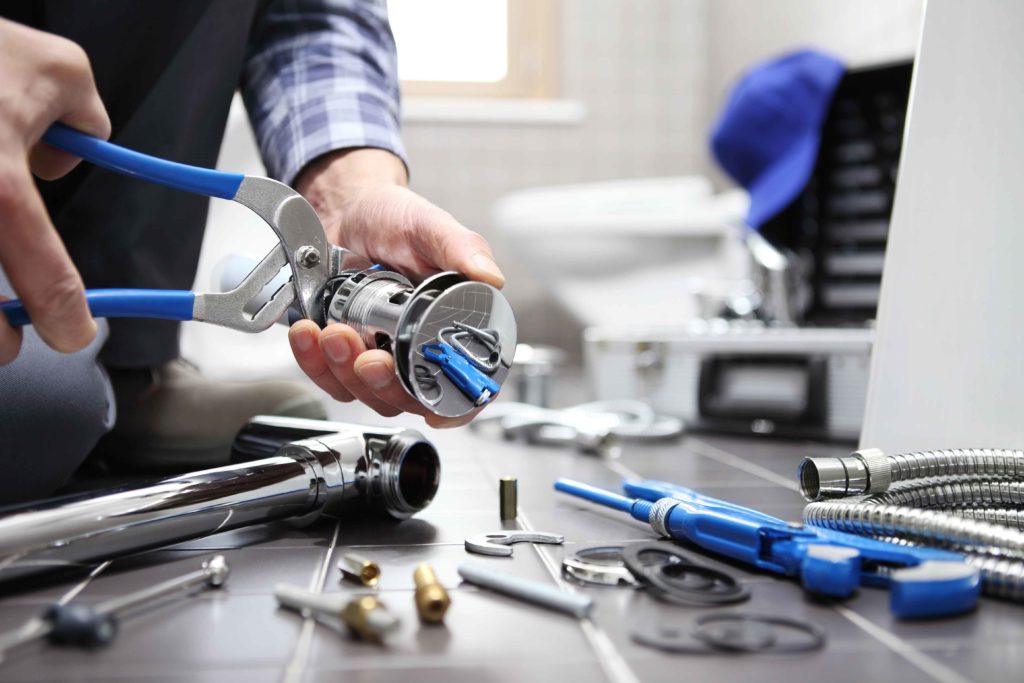Were you searching for info on What Causes Leaky Faucets & How To Fix Them?

Trickling faucets may feel like a small hassle, however their influence goes beyond just the nuisance of the noise. From wasting water to sustaining unneeded monetary prices and health and wellness threats, ignoring a dripping tap can result in numerous consequences. In this post, we'll delve into why it's critical to resolve this common family problem promptly and successfully.
Wastefulness of Water
Environmental Effect
Trickling faucets contribute significantly to water wastefulness. According to the Epa (EPA), a solitary tap trickling at one drip per second can waste greater than 3,000 gallons of water annually. This not only stress water sources but also influences environments and wildlife depending on them.
Financial Expenses
Increased Water Costs
Past the ecological effect, dripping taps can blow up water expenses considerably. The collected wastefulness with time converts into greater energy costs, which can have been stayed clear of with timely repairs.
Prospective Residential Or Commercial Property Damage
Moreover, long term leaking can lead to harm to fixtures and surfaces surrounding the faucet. Water accumulation can trigger discoloration, rust, and also structural problems if left neglected, leading to added repair work expenses.
Health and wellness Concerns
Mold And Mildew and Mold Development
The continuous visibility of dampness from a dripping tap creates an excellent environment for mold and mold development. These fungis not only jeopardize indoor air top quality but likewise present health and wellness dangers, especially for individuals with respiratory system conditions or allergic reactions.
Waterborne Illness
Stagnant water in trickling faucets can come to be a breeding place for bacteria and other pathogens, raising the danger of waterborne conditions. Contaminants such as Legionella germs thrive in stagnant water, possibly resulting in severe diseases when consumed or inhaled.
Do it yourself vs. Expert Repair
Pros and Cons of DIY Repair Service
While some may attempt to deal with a dripping tap themselves, DIY fixings feature their very own collection of difficulties. Without proper understanding and tools, DIY attempts can aggravate the problem or lead to insufficient repair services, extending the problem.
Advantages of Hiring a Specialist Plumber
Hiring an expert plumber makes sure that the underlying root cause of the trickling tap is dealt with effectively. Plumbing technicians have the proficiency and tools to identify and fix tap problems effectively, saving time and minimizing the danger of additional damages.
Step-by-Step Guide to Repairing a Dripping Tap
Devices Needed
Prior to attempting to fix a dripping faucet, gather the essential devices, including a flexible wrench, screwdrivers, replacement components (such as washers or cartridges), and plumber's tape.
Usual Tap Issues and Their Solutions
Identify the type of faucet and the particular issue causing the drip. Usual troubles consist of damaged washers, rusty valve seats, or faulty O-rings. Describe supplier guidelines or online tutorials for step-by-step assistance on repairs.
Safety nets
Normal Upkeep Tips
To prevent leaking taps, carry out routine maintenance such as cleaning up aerators, checking for leaks, and changing worn-out parts without delay. Furthermore, consider installing water-saving devices or updating to extra effective components.
Significance of Prompt Repairs
Attending to leaking faucets as quickly as they're discovered prevents further water wastage and potential damage, ultimately saving both water and money over time.
Effect On Building Value
Assumption of Well-Maintained Residential Property
Keeping a home in good condition, including dealing with maintenance problems like leaking faucets, enhances its perceived worth and value amongst prospective buyers or tenants.
Impact on Resale Worth
Characteristics with properly maintained plumbing fixtures, including faucets, command higher resale values in the realty market. Attending to trickling faucets can contribute to a favorable impact throughout residential property inspections and arrangements.
Environmental Obligation
Private Contribution to Conservation
Taking obligation for taking care of trickling faucets straightens with more comprehensive efforts towards water conservation and environmental sustainability. Every person's activities collectively make a substantial impact on maintaining priceless sources.
Sustainable Living Practices
By focusing on prompt repairs and adopting water-saving routines, individuals add to sustainable living methods that benefit both existing and future generations.
Verdict
Dealing with a trickling tap surpasses plain ease; it's a vital step toward saving water, decreasing financial prices, and protecting health and wellness and property. Whether through DIY repair work or expert help, doing something about it to fix trickling taps is a little yet impactful method to promote responsible stewardship of resources and add to a much healthier, extra lasting future.
Why Are My Faucets Dripping (And Can I Fix it Myself)?
Causes of a Dripping or Leaking Faucet
Whether you’re hearing drops of water falling and hitting a sink, or noticing water ooze out from the base of the spout, you shouldn’t ignore a dripping or leaking faucet. And, the good news is, sometimes you can fix the problem yourself.
In this article, we’ll review a few common causes of dripping and leaky. We’ll also walk you through some basic ways to find the problem and handle it without calling anyone — and let you know when to call in a pro.
But, no matter what the cause, or whether you can handle it on your own, the sooner you address it, the better.
Each drip may be a tiny amount of water. But, they all add up quickly. According to the U.S. Geological Survey, one faucet losing one drop every 20 seconds — five a minute — wastes around a liter of water every day, and 173 gallons a year.
Add in more than one in your house, and it’s a lot of water to waste. So, we’ll help you get to the bottom of things quickly.
Four Reasons Your Faucet May Be Dripping
Aerator is Damaged or Unseated Valve Seat is Corroded O Ring is Loose or Worn Out Part of the Assembly is Loose Aerator is Damaged or Unseated
If you unscrew the end of your faucet, you’ll find the aerator. It’s the little stem piece with a screen on it that shuts off the water circulation.
If it’s damaged, or if it’s not sitting right, it will allow water to pass through.
Valve Seat is Corroded
Next is the valve seat, which is connected to the washer. If the washer wasn’t in place correctly, then it could have ground against the seat. Over time, this damages the valve seat.
The problem could also be corrosion: Over time, the part has worn out, and it’s now allowing water to pass through.
O Ring is Loose or Worn Out
Since the o ring is only a small rubber gasket, it’s a common reason why the faucet is dripping. You’ll find it at the base of the faucet, and it’s there to keep water from coming out where it’s not supposed to.
However, it’s common for the o ring to wear out over time. When it does, you’ll notice a drip.
Part of the Assembly is Loose
So far, we’ve looked at a few small, specific parts. But, the problem could be anywhere in the assembly if something’s out of place.
Even if a part isn’t damaged, over time, it may have become loose or dislodged. It could be the parts we mentioned, or the aerator at the tip of the faucet, the stem itself,
Can I Fix a Leaky Faucet Myself?
Depending on the problem, and how handy you are, there’s a chance you can fix a leaky faucet without calling a professional. But, you do run the risk of making the problem worse.
If it’s a small drip, you can certainly try a few troubleshooting tactics. We’ll walk you through them in a moment.
But, no matter what, your first step should be shutting off the water coming into the faucet. You should find a shutoff valve under the sink on the pipes leading to it. Turn each one clockwise until they close tightly.
Next, make sure you have the right tools for whatever you’re attempting. It’s tempting to make do with what you have. But, you need the right ones for a reason: You’re often dealing with small parts that can break if you handle them carelessly.
If you’re feeling confident, here are some places to start.
Items Near the Tip of the Faucet
A few of the parts we mentioned — particularly the valve seat and washer — are located at the tip of the faucet where the water comes out. They’re easy to access, making it a good place to start.
Check the O Ring
To check the o ring, you’ll need to take off the spout at the base. It’s easiest on kitchen sinks with long spouts, versus the smaller, bulkier base on most bathroom sinks.
Either way, this can be tricky, so do it carefully and don’t force anything. If it’s not coming right off, you’re much better off calling in a pro than possibly breaking something.
For a kitchen sink, there’s usually a nut or coupling assembly at the base of the spout. These often slide off easily without using any tools.
Once you’ve disassembled those parts, gently but forcefully twist off the spout.
Then, you can see the o rings. There should be two of the rubber gaskets on the base. If they look worn or damaged, replace them, and see if that solves the problem.

I'm very fascinated by Water Dripping from Faucet: Why and How to Fix and I'm hoping you enjoyed reading the entire entry. If you please take the time to share this blog posting if you enjoyed it. Thanks a lot for your time spent reading it.